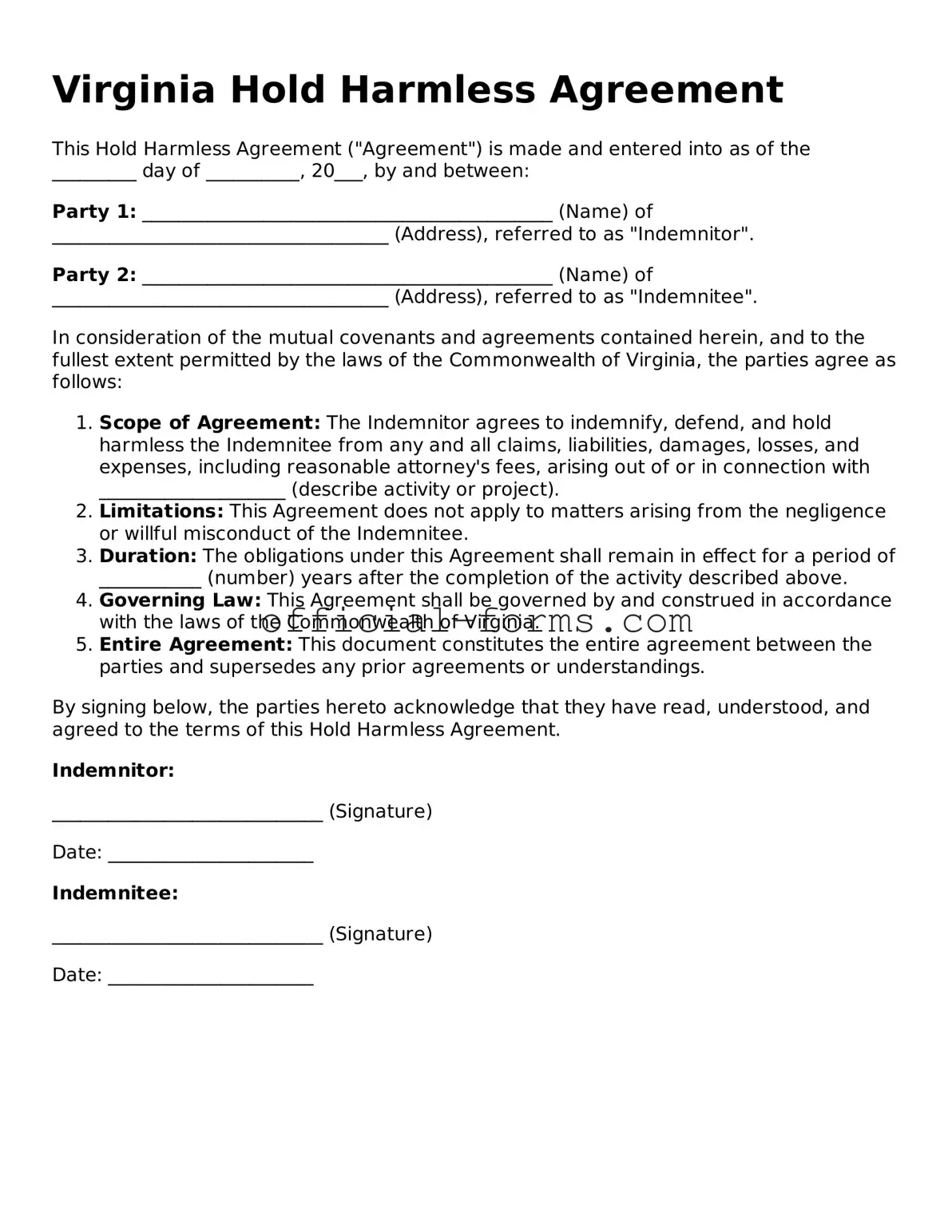Official Virginia Hold Harmless Agreement Document
The Virginia Hold Harmless Agreement is a legal document designed to protect one party from liability for certain risks associated with activities or events. By signing this agreement, individuals or organizations agree to take responsibility for any potential injuries or damages that may occur, thereby shielding the other party from legal claims. Understanding this form is crucial for anyone engaging in activities that could pose risks, ensuring clarity and protection for all involved.
Open My Hold Harmless Agreement Now
